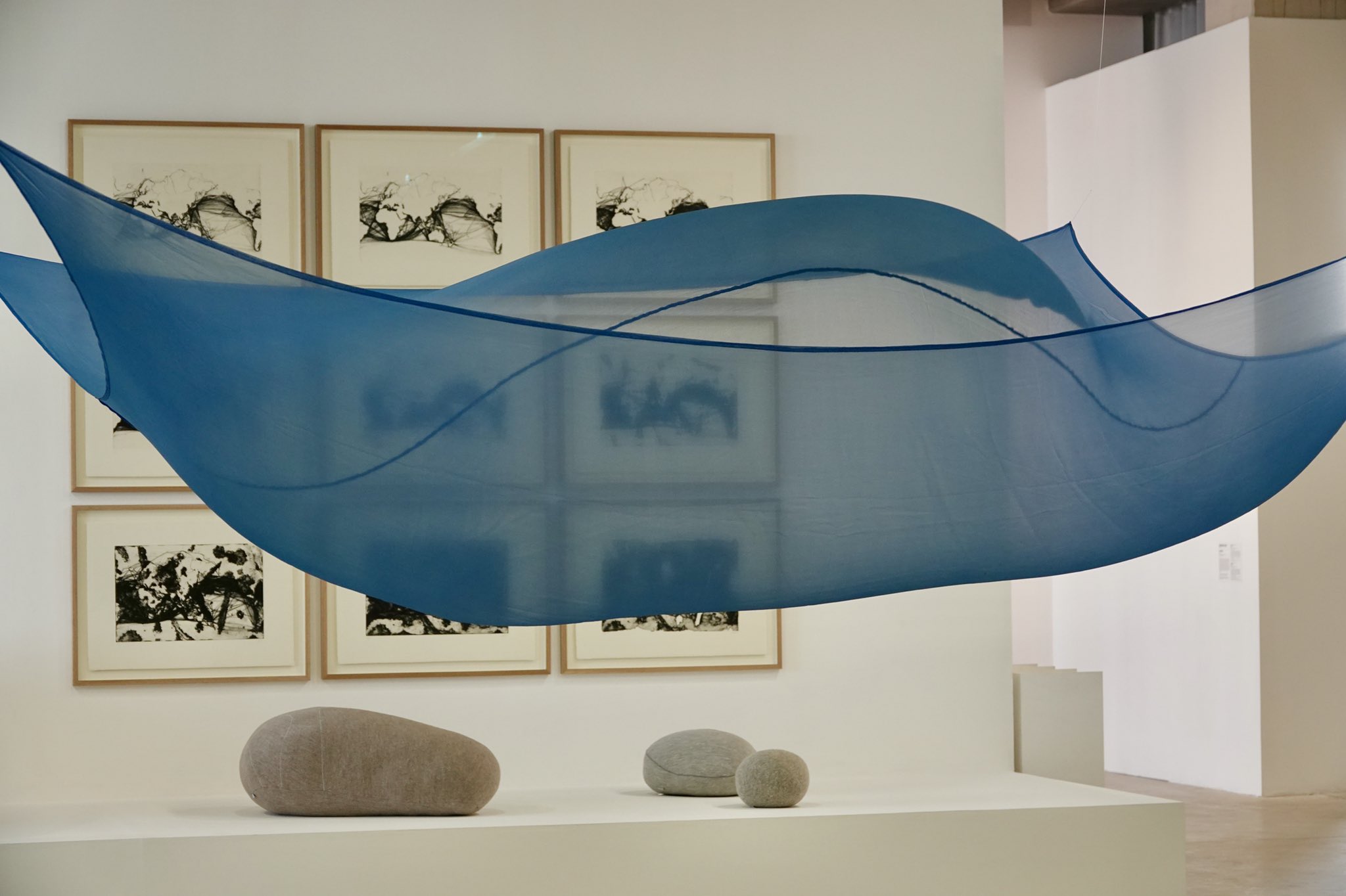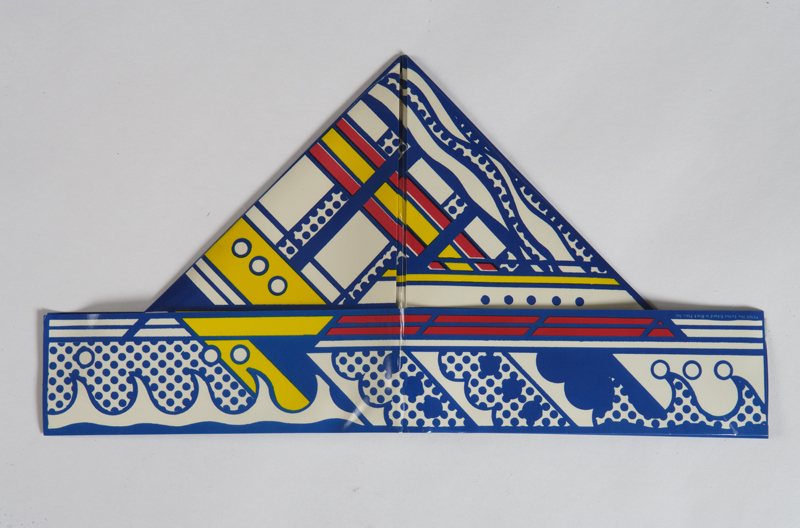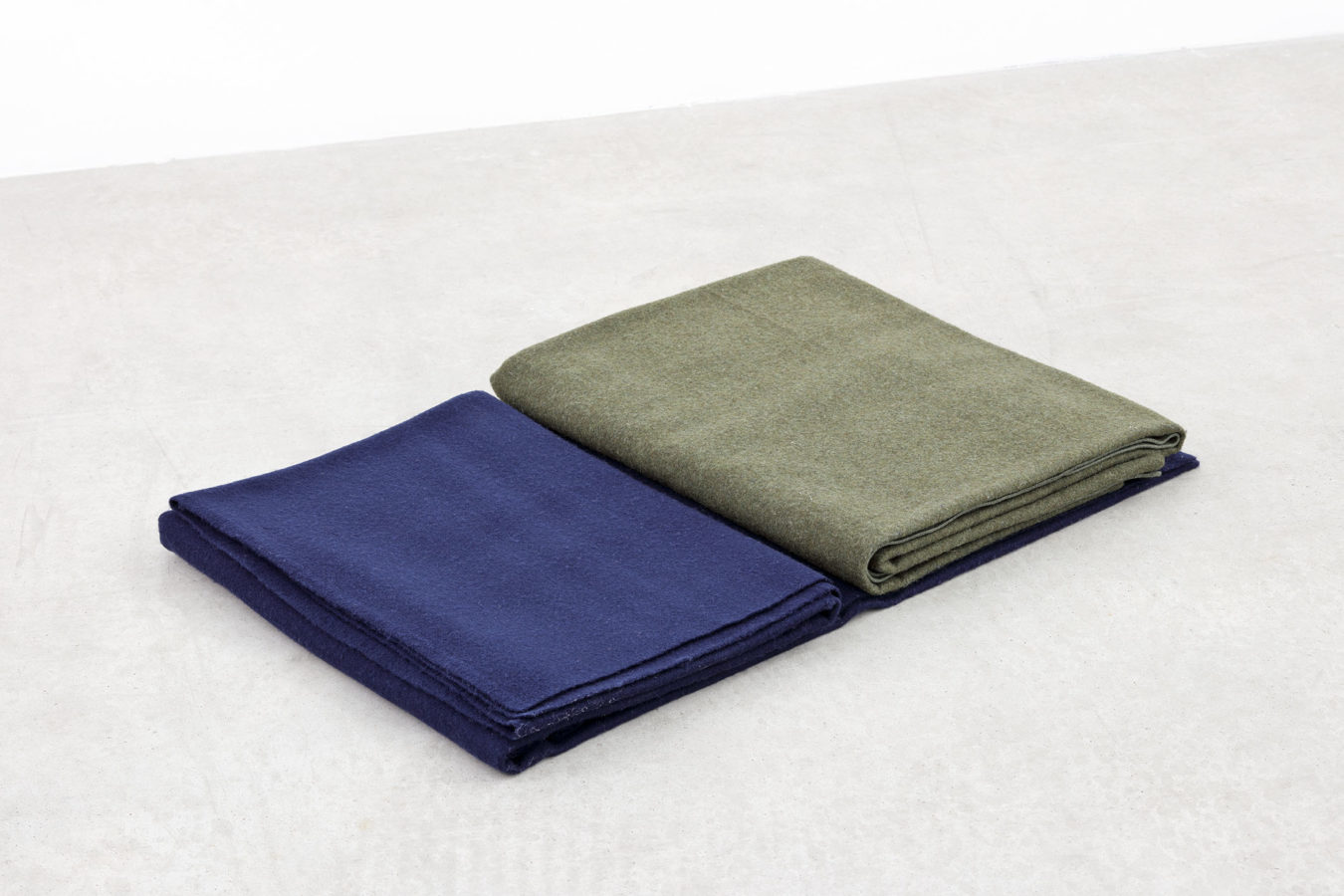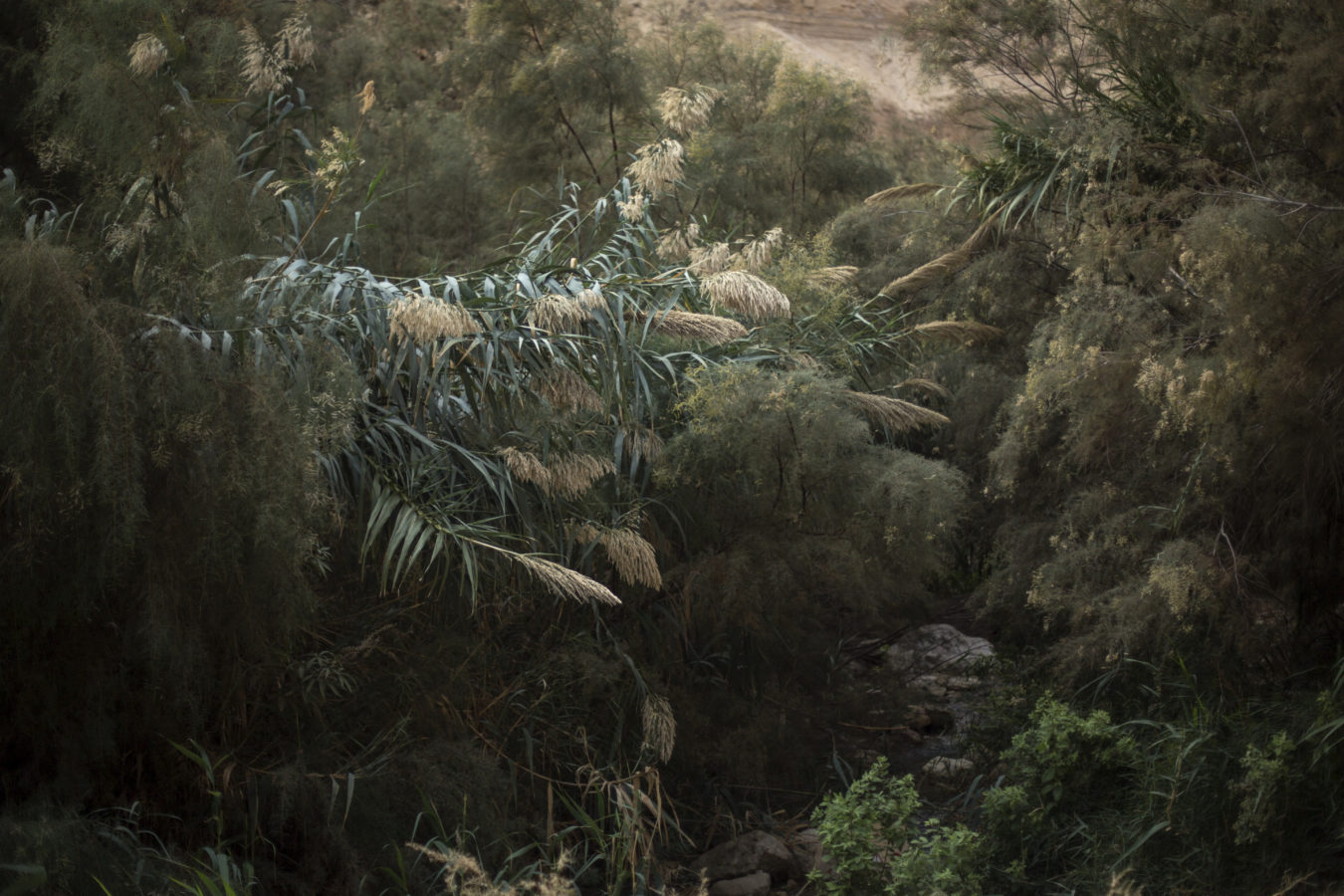Horizon(s)
17.09.2022 — 23.04.2023
Frac Grand Large — Hauts-de-France

FRAC GRAND LARGE TURNS 40! FORTY YEARS OF REGIONAL COLLABORATION WITH PARTNERS FROM DUNKIRK AND ELSEWHERE.
With works by : Marie Bourget, Charley Case, Christine Deknuydt, Hans Haacke, Ali Hanoon, Paul Hemery, Ilanit Illouz, Roy Lichtenstein, Helen Mirra, Erez Nevi Pana, Ria Pacquée, Frank Perrin, Catherine Rannou, Joachim Schmid, smarin, UZÉS, Capucine Vever
“Our traditional sense of orientation—and, with it, modern concepts of time and space—are based on a stable line: the horizon line. Its stability hinges on the stability of an observer, who is thought to be located on a ground of sorts, a shoreline, a boat—a ground that can be imagined as stable, even if in fact it is not.”
Hito Steyerl*
We have invited three Dunkirk museums – the LAAC, the Musée du Dessin et de l’Estampe Originale (Prints and Design) in Gravelines and the Musée Portuaire (Harbour Museum) – to join us in this anniversary exhibition.
Over the last forty years Frac Grand Large – born in Lille and based in Dunkirk since 1996 – has acquired an international reputation for the quality of its collection, with nearly 2000 works of art shown in museums, schools and community association venues throughout the region.
Today, several hundred works are exhibited each year in projects co-constructed with partners – children’s and students’ groups, municipal teams and civil society representatives – who become exhibition curators.
For Horizon(s) the teams from Frac and the Dunkirk museums have chosen works from their collections that echo the specific character of our coastline, at the crossroads of maritime routes.
The horizon is intimately linked to the history of art. To the viewer given a part to play, its artistic representations reveal a vision of the world that has been constructed and evolved over time. How are landscapes reflected in our collections? What do they say about our history? How can the horizon reinvented by artists contribute to transforming our view of the world and society?
The exhibition brings together works acquired by the Frac (from the first committee** in 1983 until 2021), works by artists produced in Dunkirk during residencies (Charley Case at the Gravelines museum, Ria Pacquée at the LAAC, Catherine Rannou at the Frac) and objects documenting the beach resort scene in Malo-les-Bains, home to the Harbour Museum.
Comprising single works and series by recognised and anonymous artists, the exhibition calls on us to join forces in thinking about today’s shifting horizon.
Are you ready to face the reality of an unstable present, and to lose yourself in dreams of new horizons?
SAND BETWEEN THE TOES
The second half of the 19th century saw Malo-les-Bains, much appreciated for its vast beach of fine sand, develop into the favourite seaside resort of Lille’s wealthy industrialists and Parisians in search of bracing sea air. Its tourist appeal was enhanced during the same period by France’s burgeoning railway system and an unexpected economic boost from an influx of goat herders from the Cantal region who sold their milk to beachgoers.
At the turn of the 20th century the beach was established as the place for holidays and leisure activities, offering a perfect playground for small sandcastle builders armed with wooden shovels and buckets. This image of the seaside is mischievously played on in Pop artist Roy Lichtenstein‘s Folded Hat, but there were other things to do, too: walks along the beach could be agreeably combined with swimming and entertainments.
Artist Joachim Schmid collects photographs of the 20th century, especially by amateurs, as a way of portraying a society in movement. More and more activities appear, notably jogging and water sports, as those fine sandy beaches take on more and more the appearance of amusement parks. Even so, the pirouettes, beach huts and sandcastles live on.

SHADES OF THE IMMATERIAL
Inherently elusive, the colour blue conventionally conjures up water and the sky. Here Hans Haacke’s installation Blue Sail and Christine Deknuydt’s drawings on sand yellow paper both play on this register.
The sail hovering at the centre of the exhibition space is a youthful work by German artist Hans Haacke, acquired by the Frac in 1985. Close to the Zero group and particularly to Yves Klein and Piero Manzoni, Haacke was working on the implementation of natural phenomena. The simplicity of this contrivance, at once aerial and marine, endows the work with a contemplative, meditative dimension.
Born in Dunkirk and trained at the art school there, Christine Deknuydt is the creator of a pictorial practice allowing matter to evolve freely. Her substantial oeuvre – several thousand paintings and drawings bequeathed by her family to Dunkirk’s museums, and Frac Grand Large in particular – this selection in blue embodies the concepts of trace and uncertainty.
We might see in her drawings aquatic shapes and figures from the ocean depths: the poetic outcome of experiments combining areas of diluted colour with the unforeseeable. For her the animal form is “like a link between the image and the void. These are uncompromisingly mental images.” As if in a laboratory, Deknuydt observes the reactions produced by chemical substances in combination or applied to a support – in this instance, paper.

SEALINE
Representation of landscape can be reduced to the expression of its simplest forms, such as the linearity of the horizon specific to the Dunkirk coastline. Viewed from the Frac’s belvedere, this line originates in the Grand Large district and moves away towards Belgium.
With her Coastline (folded) assemblage, Helen Mirra has chosen to put two American army blankets side by side. The blue one comes from the Navy, the green one from the Army. The green blanket rests on a section of the blue one, creating a slight change of profile reminiscent of the region’s sand dunes and sparking a notable resonance with a succession of military episodes. As a port city in Flanders bordering on England, Dunkirk was involved in the Hundred Years’ War (1337–1453), the Battle of the Dunes (14 June 1658), the Battle of the Yser and the Battle of the Atlantic (both 1914) and the Second World War evacuation known as Operation Dynamo or “Dunkirk” (1940).
The result of her rovings around Dunkirk, Ria Pacquée‘s photographic contribution is more marked by a mysterious contemporaneity. Focusing on the summer fun on the Saint-Malo dike, she offers a new slant on reality through the incongruousness of the masts and coloured poles whose verticality interrupts the line of the sea.
SALTSCAPE
Renowned since antiquity for the therapeutic virtues of its waters, the Dead Sea is the obligatory seaside stopover in the Near East. Exploited since Neolithic times for its asphalt – aka Judean bitumen – it has lost a third of its surface area since 1970, owing to the drying-up of the river Jordan, intensive recourse to its resources and evaporation caused by industrial activity. The increasingly rapid shrinking of this salt lake can be seen as direct evidence of global warming.
With the Bleached series, Israeli designer Erez Nevi Pana expresses his ecological commitment through creative use of the crystallisation of salt. To create this enigmatic stool, for example, he collected pieces of wood, covered them with loofah sponges*** and assembled them with a vegan glue. He then immersed the object in the Dead Sea for several months until it acquired a thick coating of crystallised salt. The mutation effected by the salt served as a means both of denouncing today’s ecological disaster and generating awareness in the design world of the use of non-animal materials
This aquatic basin, the lowest point on the planet, became Ilanit Illouz‘s territory for her photo series Les Dolines.**** After photographing salt deposits and windblown reeds in the valley of Wadi Qelt, she immerses her images in water from the Dead Sea. Like archaeological strata, the resultant crystalline layer conjures up the region’s long history, including a parallel between the extraction of Judaean bitumen and its use in the 19th century by Nicéphore Niepce, inventor of heliography.*****

HOPE ON THE HORIZON
Political instability and the inroads of climate change are forcing more and more people into exile. In this context the horizon carries with it the hopes of these travellers in their search for of a new land ready to welcome them. However, these crossings are not without risk. Our society – although over-informed – is not paying due attention to this ongoing tragedy.
Struck by the fearlessness of these migrants, Brussels artist Charley Case took advantage of a residency at the museum in Gravelines to produce a series of prints highlighting the many dangers of these crossings. Movement is omnipresent in Case’s artistic and philosophical approach, in the form of human presence and socialisation, changes of place and the impact of these factors on the environment.
Case works in two phases, beginning with a spontaneous gesture, letting his imagination speak freely, then working on composition and the emergence of human figures. His frail boats appear to be battling against raging, swirling waters, like the body of a sea serpent whose head seems to merge with the boats. Suffused with the hopes of travellers in search of a better future, the horizon is nonetheless forbiddingly gloomy. And while carbon black underscores the dangers of the bottomless, shroud-like depths, white conveys the sheer force of waves capable of capsizing these makeshift craft.

SOFA SO GOOD
Experiencing this highly unusual sofa – invented by Nice-based designer Stéphanie Marin (alias smarin) – is an absolute must. These giant pebbles – so comfortable and soft, and seemingly polished it by air and wind – joined the Frac collection in 2020. Two copies of each model were acquired so that every visitor would have a chance to try them out. Assembled to form an imaginary, spiritually soothing landscape, this poetic living room offers the most extravagant of beaches.
La Relève, (The Changeover), Capucine Vever‘s 15-minute video, was filmed from the Créac’h semaphore on the island of Ouessant.
Initially there is only the calm of the horizon, the sea stretching serenely away out of sight. In a sonorous murmur the artist describes to us the positions and dates of cargo ships passing out of shot as, gradually, the film homes in on the architecture of the lighthouse. Creating a dissonance between words and image, the narrator’s voice reminds us of the incessant comings and goings of the global economy. The ships’ absence from the image is underscored by the sound of their ghostly presence.
Both the camera and the narrator seem to be searching – in vain – for these ships concealed in the vast expanse of the ocean, while at the same time paradoxically present, via their merchandise, in the life of every human being. Through her subjective positioning at the lighthouse, the artist recreates that of the lighthouse keeper, a métier now lost to automated navigation. Assuming that role, the narrator “reveals” her knowledge of these presences at sea, playing on the title of the work as a signal of a new awareness, an ecological changeover.
The exhibition is organised in collaboration with the LAAC museum, the Musée du Dessin et de l’Estampe Originale in Gravelines and the Musée Portuaire in Dunkirk.
* Hito Steyerl, In Free Fall: A Thought Experiment on Vertical Perspective, e-flux Journal: https://www.e-flux.com/journal/24/67860/in-free-fall-a-thought-experiment-on-vertical-perspective/
** A group of 4 to 6 art and design professionals invited to spend three years taking part in constituting the Frac
*** A natural-fibre sponge made from a kind of marrow
**** Salt cavities created by the shrinking of the Dead Sea
***** A photographic technique inspired by the etching process
Date(s)
17.09.2022 — 23.04.2023